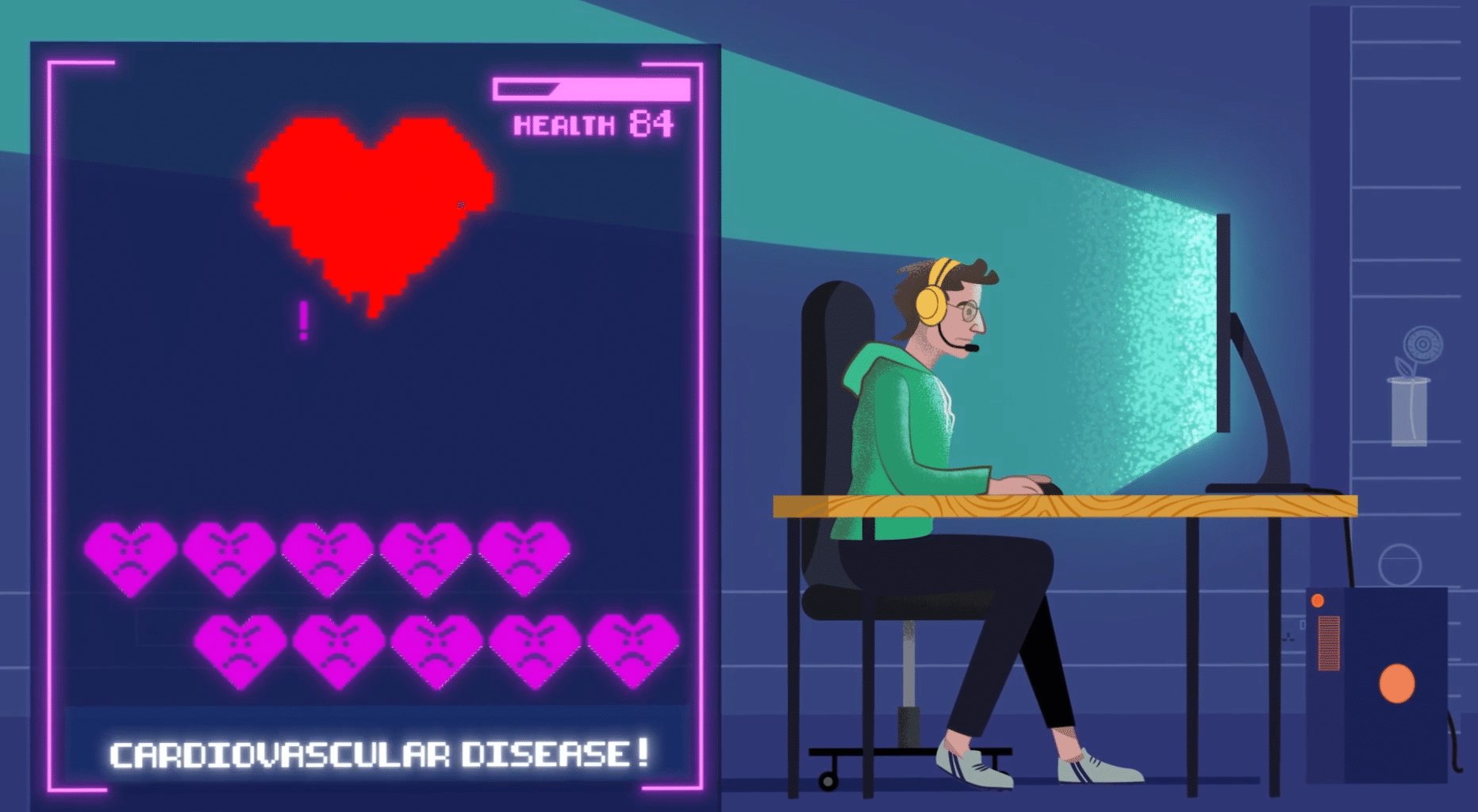Declan Ryan, @Dekes31, University of Northampton
We’ve all heard about the couch potato – someone who sits around all day – but what’s an “Active Couch Potato”? The phrase first appeared in scientific papers around 2010. Simply put, “Active Couch Potato” describes someone who meets the recommendations for physical activity but still sits around for long periods of the day. Office workers may be the first people that come to mind when you hear this term and businesses are investing big bucks to combat this lifestyle in their workplace. You might even be reading this whilst working at your brand-new standing desk.
“But how can someone be active and be a couch potato?” I hear you cry. Scientific research has started to reveal that, in some cases, activity of a moderate intensity (one’s that gets you out of breath) may target different parts of the body (such as different muscle fibres), in comparison with prolonged sitting. Therefore, moderate intensity activity may not cancel out the negative impact of the prolonged sitting. Research from The Lancet suggested that middle-aged to older adults’ risk of early death increased in two cases: when sitting time increased and also when moderate activity time decreased. It wasn’t until members of the public were doing an hour per day of moderate activity that the effects of increasing sitting time were counteracted. Further follow-up research has since suggested that people who do meet the recommendation of 150 minutes per week of moderate activity are most at risk of complications from sitting if they sit down for more than 8 hours a day. In the United Kingdom, Health Survey for England 2016 data estimated that less than 35% of adults met the recommended 150 minutes per week of moderate activity and two days per week of muscle strengthening activity. Meanwhile, combined occupational and non-occupational sitting time was about 8 hours per day on average.
Now all this might sound like doom and gloom, but it isn’t. This interplay between moderate activity and sitting gives us options. If you like engaging in activity – maybe you power-walk the kids to school or cycle to work – then you can continue to engage in the activities you enjoy! But if that hot and sweaty physical activity isn’t really your thing, you could instead try to reduce your sitting time.
Research groups around the world have started to investigate when and how we should break up our sitting time. Most of them have used blood sugar as a marker of health as it is very sensitive to the movements that we do. A recent review of the research suggested that breaking up sitting time every 30 minutes or so with a couple of minutes of light intensity activity, such as slow walking, may be sufficient to keep blood sugar lower throughout the course of the day. This research is still new and emerging and therefore, the government recommendations only state that we should “minimise prolonged sitting” at this time. In the future, we may see some timings associated with this recommendation but for now, the evidence seems to suggest that movement breaks work better than standing breaks for our adult population when it comes to markers of cardiovascular health. However, standing desks may have a role to play in relieving muscular discomfort, which is a leading cause of days off amongst the UK workforce. Ultimately, the message when it comes to reducing sitting (and standing even) is not to stay in one position for too long.

If change doesn’t come easy to you, think about the things you enjoy. Is it socialising, shopping, clearing the mind? You may not even realise it but a lot of the things we enjoy can incorporate some activity. So have fun walking around the shopping centre, playing with your children in the park, or exploring the countryside with your friends. Every minute counts and will help keep you doing the things you enjoy for longer.
A bit more about the author: Declan Ryan is a Health Physiology Lecturer at the University of Northampton who investigates the benefits and risks of physical activity and prolonged sitting. Read more about his research and publications here: https://pure.northampton.ac.uk/en/persons/declan-ryan
